Why Your Emails Are Going to Spam
Jenny Keohane
There’s nothing worse than your email going right into the black hole of a spam folder – with no opportunity for your recipient to read it.
The truth is, the overuse of email and high-velocity tactics has required spam filters to be more unforgiving than ever.
Internet service providers (ISPs) and email services (Gmail, Outlook, etc.) will automatically block emails they detect as spam, but the filtering process isn’t perfect. And some common mistakes can cause your email to get tossed into the void.
Spam filters are now looking at what you’re writing, how you’re writing it, and how recipients are engaging.
With billions of spam emails being sent every day, the current state of email deliverability is way down.
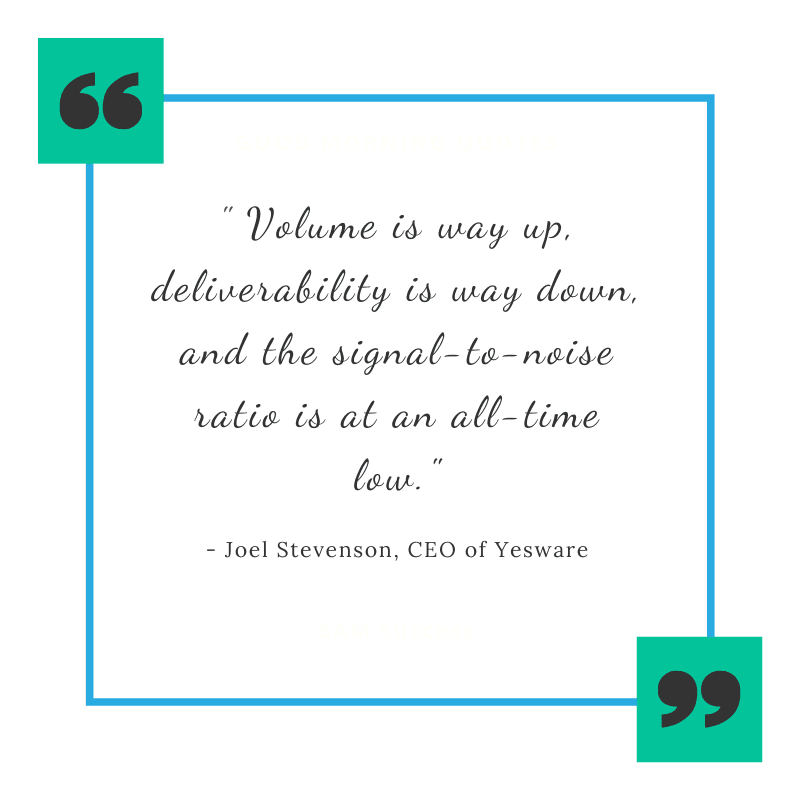
So, we compiled the top 5 reasons your emails are going to spam and how to avoid this.
Note: Before we begin, make sure you are familiar with the CAN-SPAM Act set by the FTC which is a law that sets the rules and requirements for commercial emails. The first step is to be ethical and follow these rules before anything else.
Now if you’re not a spammer, you’re following the rules, and you’re still asking yourself “why are my emails going to spam” – you’re not alone and we have the solution for you.
Top 5 Reasons Your Emails Are Going to Spam Folders
- You Have Low Engagement Rates
- You’re Not Updating and Cleaning Your Email Lists
- Your Content Is Flagging Spam (Body of Email and Subject Line)
- You’re Using Spam Trigger Words
- You Included an Attachment
1. You Have Low Engagement Rates
Spam filters can now detect how your recipients are engaging with your emails. This is one of the most common reasons emails go to spam.
If you historically have low open or bounce rates, your emails are much more likely to be flagged as spam. The more email engagement you receive from recipients, the more likely you are to reach their inbox.
A key tip for avoiding this is to avoid sending emails to the same addresses that are not opening or engaging with your emails after multiple tries.
You can use tools like Yesware that have Email Tracking to see if people are interacting with your email or even opening them at all.
![]()
Yesware’s email activity feed and Recipient Engagement Report will tell you exactly who is engaging and who isn’t. If you’ve tried multiple times and there’s still no positive engagement – our recommendation is to stop emailing this same person for now because this will negatively affect your email reputation.
Tip: Marketers — when sending marketing emails and campaigns, watch your subscriber engagement and ensure that your unsubscribe link is evident. Also, ensure your IP address is clean and was never used for spam in the past.
2. You’re Not Updating and Cleaning Your Email Lists
Keeping your email lists clean plays a huge role in preventing your emails from going to spam.
First and foremost, your email list should consist of legitimate addresses and valid opt-ins from the recipients.
Remember to clean out your lists by deleting all inactive email addresses on a regular basis. If you’re consistently sending emails to inactive accounts, this will significantly hurt your open rates. As discussed above, low open rates are a big indicator of spam.
Go through your email lists on a monthly basis, clean them up, and delete all inactive addresses to avoid a bad reputation. Stay on top of your email metrics to ensure your email addresses are legitimate and active.
3. Your Content Is Flagging Spam (Body of Email and Subject Line)
The content of your emails – both the body and subject line – can contain various flags that set off spam triggers. Spam filters now monitor your messages for spam-like wording and formatting.
Here are the top two behaviors you should avoid to ensure your email doesn’t get flagged as spam:
1.) AVOID ALL CAPS! Nobody likes to be yelled at. Avoid all caps in both the body of your text and your subject line. Email filters catch these easily.
2.) Avoid using multiple exclamation points!!! This looks very spam-like and just plain right unprofessional – for the sake of all of us, try to avoid this.
These are two of the most common patterns in spam folders today. As seen above, these were found in the dark hole of my very own spam folder.
Another huge spam flag is any type of spelling or grammatical errors. These are not only spam triggers but they’re also not too charming to your recipient. The best way to avoid this is to use tools that flag your mistakes and always proofread.
I personally use Grammarly, and it’s great for catching quick errors on the fly.
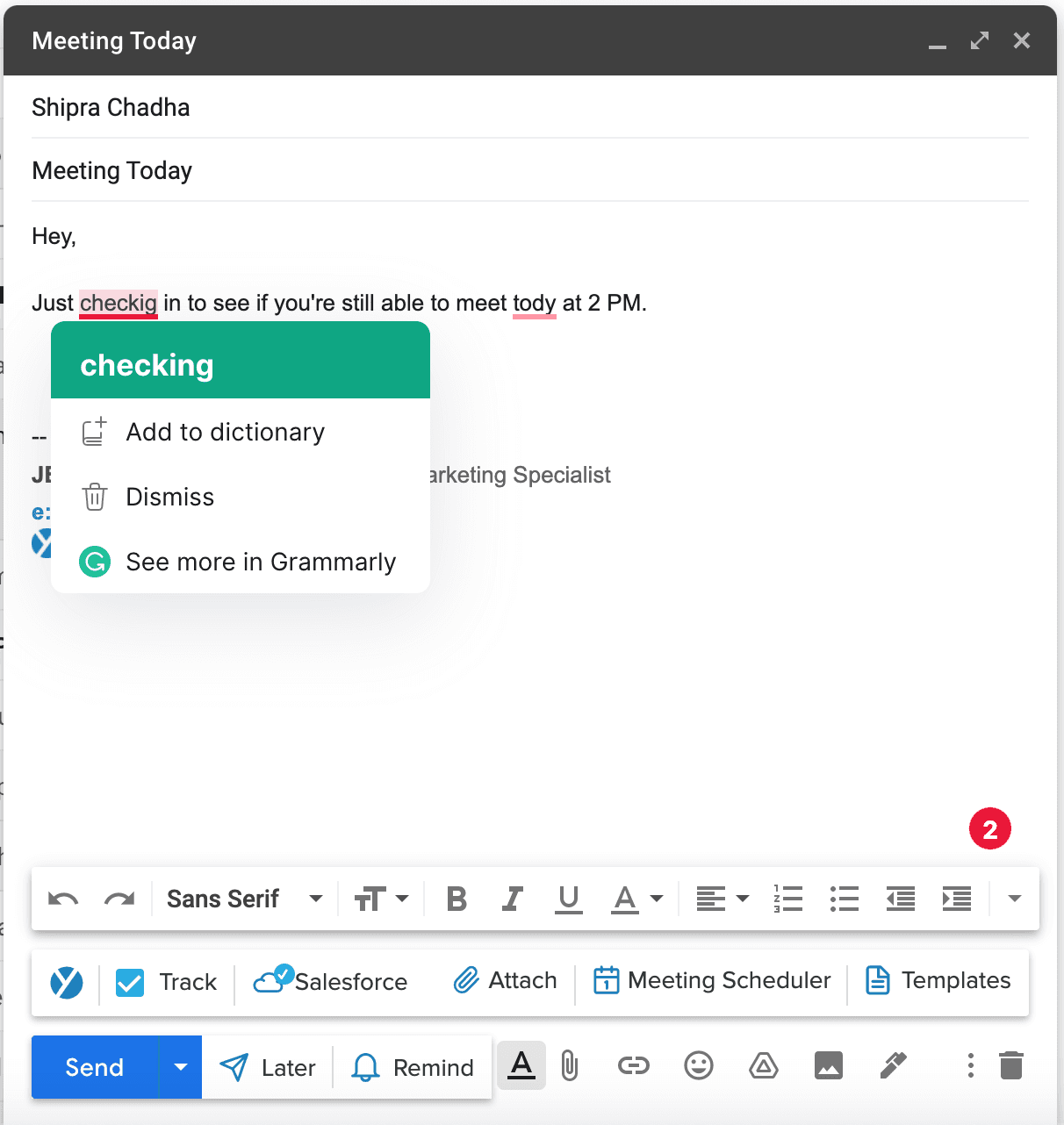
Lastly, avoid using different colored text. Although some people might think these are eye-catching, spam filters actually pick these up as indicators of spam.
Keep it simple. Use no more than 3 font styles/colors total per email.
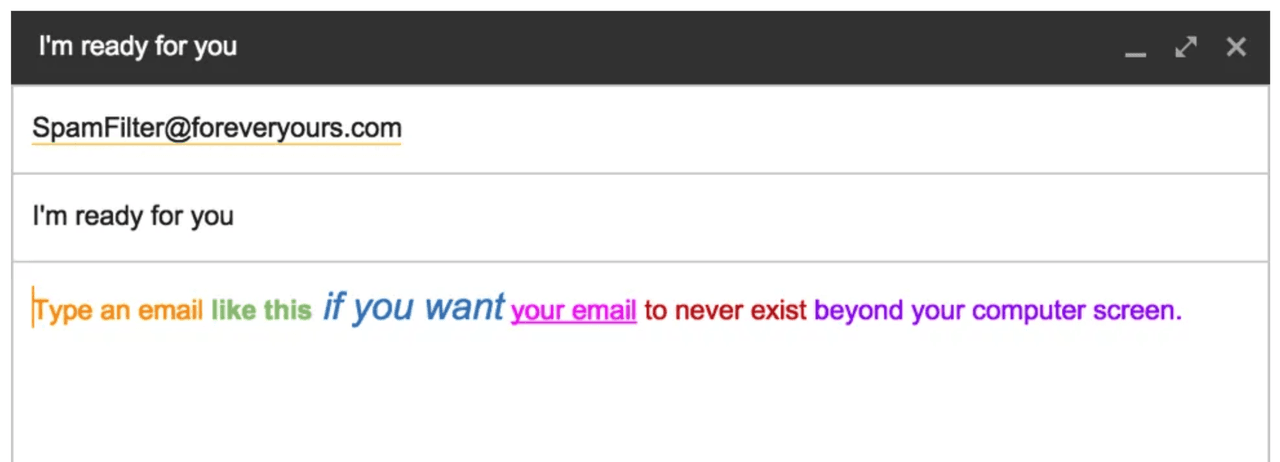
Use Personalization to Boost Email Open Rates and Improve Deliverability
Our top recommendation for perfecting the content of your email is to personalize, personalize, personalize.
The harsh reality is that 57% of email recipients consider a message to be spam if it isn’t relevant to their needs. So if you’re sending the same mundane messaging over and over again, off to the spam folder you go.
That’s why you need to personalize your messages. This way, spam filters can pick up that you know the recipient you’re sending to. And personalizing your email increases the likelihood of your recipient engaging and interacting with your message.
With advanced personalization features within Email Campaigns and Templates, you can easily personalize your messaging at scale.
Yesware’s Templates enable you to create a library of your go-to messaging and actually see what works so that you can iterate.
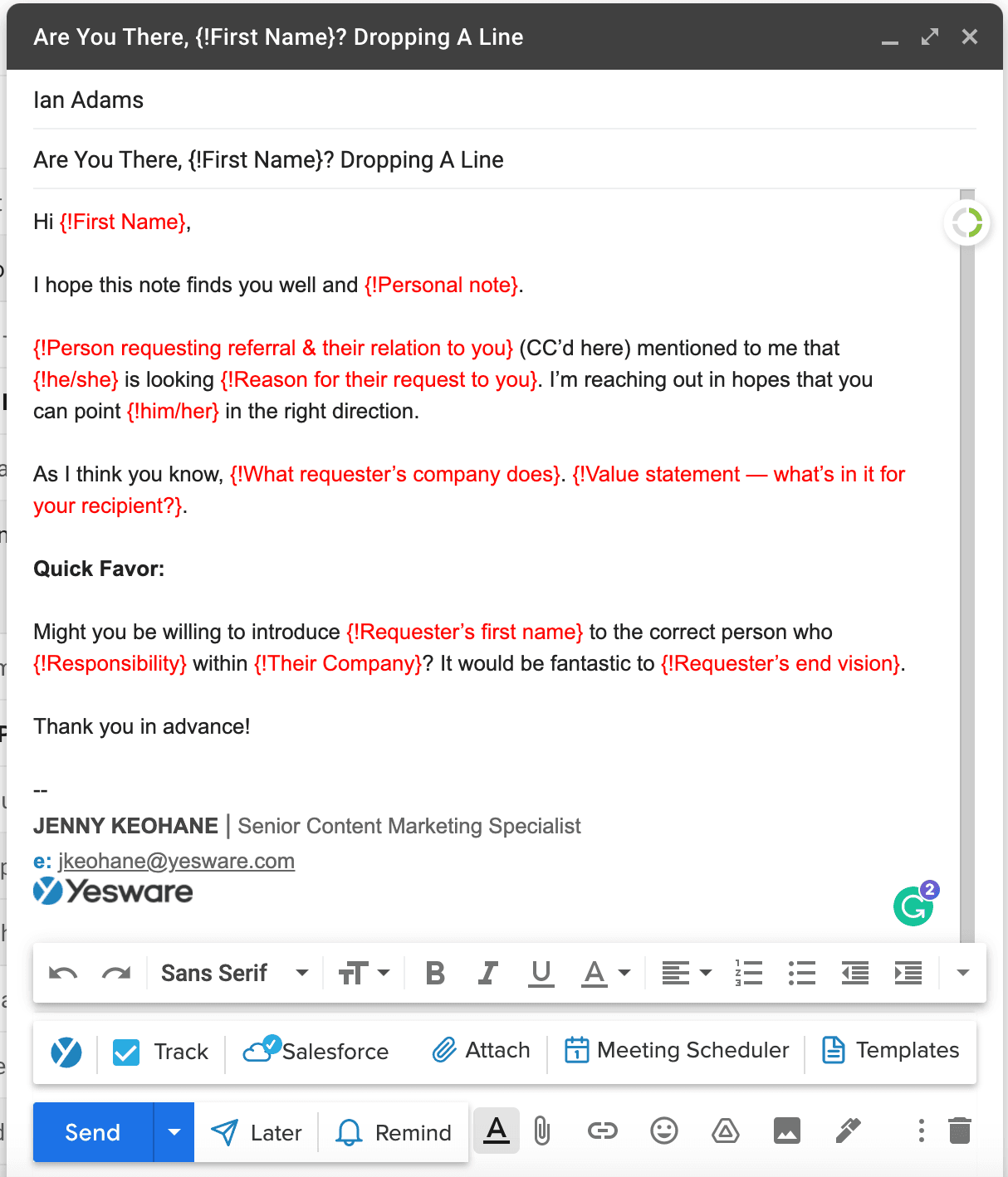
Using templates, you can personalize every email without wasting the time of typing each one separately. Emails with customized messaging for individual recipients see higher open rates and reply rates.
4. You’re Using Spam Trigger Words
Unfortunately, sometimes the words you use in your emails are what’s keeping you from reaching recipients.
This is because of content-based email spam filters.
There are certain words and phrases that you should avoid using in both your emails and email subject lines. But especially your subject lines.
Here are some of our top spam trigger words to avoid using:
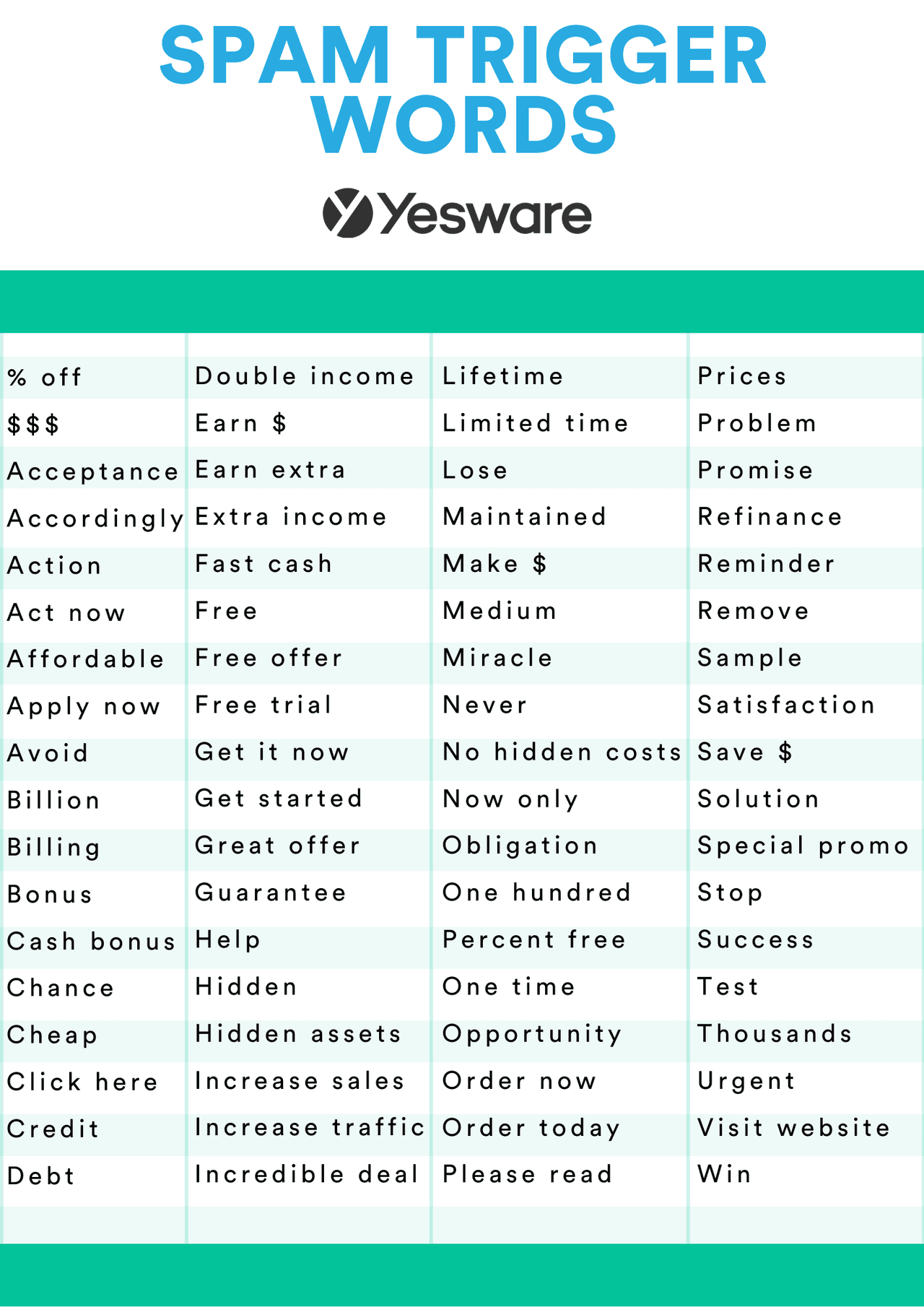
5. You Included an Attachment
Spam filters are on the watch for attachments. This is because true spam emails often contain destructive attachments, so filters will automatically overreact when attachments are present.
So a good rule of thumb is to avoid attaching files to your prospecting emails. Also, attachments negatively affect the load time of your email, which increases bounce rates.
Don’t get me wrong – if the person is expecting to hear from you (someone who has you in their contacts) then by all means attachments are perfectly okay. But never send an email with an attachment to a new contact or in a cold email.
Our tip for if you want to attach a file or document in a cold email is to use a link – link to it with a CTA that directs the recipient to your website.
Tip: To reduce the chance of your email being flagged as spam, we recommend using descriptive links. For example, use Yesware rather than www.yesware.com.
Watch Improved Email Deliverability
With spam filters improving and becoming more refined, it’s always important to stay on top of up-to-date patterns and keep an eye on your email deliverability.
If you’re ever confused about why emails are going to spam – Google recommends looking at the messages that were identified as spam in the past to find patterns.

To finish off, engrave these tips and practices into your everyday emailing activities to ensure your emails always reach your recipients’ inboxes.
Don’t let unethical spammers ruin your everyday emailing practices.
If you keep in mind spam filters and what sets them off, personalize all messages with the focus on building relationships, and stay on top of what’s working and not working – you’re set up for success.
Tip: Here’s a guide on email authentication to ensure a credible domain.
Get sales tips and strategies delivered straight to your inbox.
Yesware will help you generate more sales right from your inbox. Try our Outlook add-on or Gmail Chrome extension for free, forever!
Related Articles
Jenny Keohane
Jenny Keohane
Melissa Williams
Sales, deal management, and communication tips for your inbox


